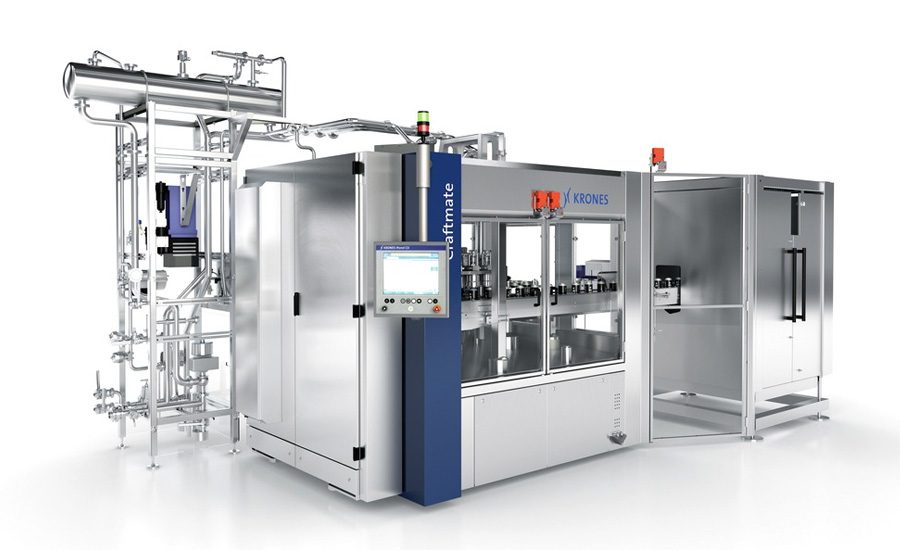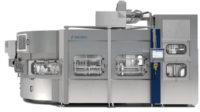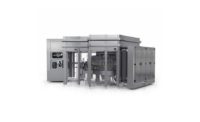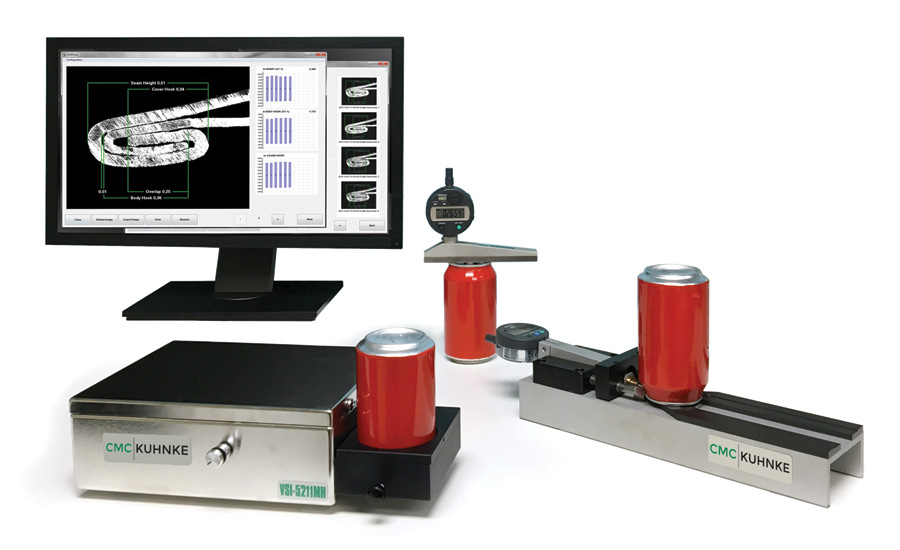Productivity and safety focus of can filling and seaming machines
Craft brewers package beers in aluminum cans




Like a car being made in an automotive assembly plant, the technology and equipment used to make and fill aluminum cans has been perfected with time. In response to a proliferation of SKUs and for craft brewers to package their products in aluminum cans, beverage plants are innovating with can filling and seaming equipment that can run multiple products and multiple SKUs with shorter changeover times, experts note.
Several trends are impacting the can filling and seaming industry, they add. These include small- and mid-size beverage companies canning a wider variety of products, a decrease in the size of the traditional 12-ounce can to slim cans and multi-sizes, and a proliferation of microbreweries packaging their craft beers in aluminum cans.
Roland Strabler, head of Canning Technology USA at Havre De Grace, Md.-based Ferrum Inc., a business unit of Ferrum Ltd., notes that government guidelines and regulations are placing pressures on beverage-makers to reduce the amount of sugar content in beverages such as carbonated soft drinks (CSDs). Alternative packaging sizes also are being sought out as a measure to curb sugar intake. “This has contributed to the increase in cans, such as the slim or sleek, which are [a] smaller capacity single-serving,” he says. “Besides that, craft brewing is growing continuously and contributes to a large variety of small brewing companies with a high variety of beers with different flavors and qualities, e.g., non-pasteurized beers.”
Craft beer packaged in aluminum cans has been a significant move, according to Barry Fenske, technical sales in the filling division at Franklin, Wis.-based Krones Inc. “There have always been [a] handful of brewers that canned, but the vast majority stayed in kegs and bottles. The idea being that cans were an inferior package for craft beers,” he explains. “That stigma is evaporating. Cans are a great package for craft beer, [and they] can go places that glass isn’t allowed, e.g., boats, poolside, the beach, stadiums.”
Maura Marcks, marketing manager for Albany, N.Y.-based CMC-Kuhnke echoes similar sentiments. “Craft brewers are typically on a tighter budget and have less output than mainstream beverage companies,” she says. “Therefore, they seek out customized solutions that fit their small production needs and budgets. Smaller, more inexpensive options become more available as the demand has increased from growing beverage companies.”
Marcks also notes that small-scale beverage companies are canning more products — beer, hard cider and wine — which has “increased the need for smaller, less expensive canning lines (like WildGoose Canning Systems) and has fostered the growth of mobile canning services (like CanVan or River City Canning),” she says.
A commitment to safety
When it comes to the science of seaming, experts note that precision, safety and quality control are crucial components to address, but the type of beverage — water, ready-to-drink (RTD) teas, beers, juices — also must be taken into consideration.
“For oxygen-sensitive products like beer, getting rid of the air in the can prior to filling and seaming is critical,” Krones’ Franklin says. “TPOs (total package oxygen) impact taste and shelf life. The lower the TPO, the better the product tastes over a longer period of time.
“For those distributing a long way, or possibly exporting, this is critical,” he continues. “Fill accuracy is also key. Breweries don’t want to be giving away product for free, and consumers don’t want to get shorted. Some agencies will fine manufacturers if fill volume is off a certain amount. The lid needs to be seamed properly as well. Bad seams mean bad product in a very short time. Or split product inside the secondary packaging.”
Ferrum’s Strabler adds: “If you are talking about beer, for example, then controlling the oxygen content within the product and the product container is extremely important. Also, low-alcohol beer requires very stringent hygienic practices in order to avoid biological growth, [so there are] hygienic aspects of the seamer and the cleaning process. A high-quality seam is produced by using the correct profile for the seaming chucks and rolls and by the proper setting of the seamer. The quality of the seam is periodically verified via [a] precise measuring system and compared to the seam specification.”
The company highlighted several of its can seaming machines within its white paper titled “Canning Technology: The New Generation for the Perfect Seam.” Designed for food and beverages, its three disengageable base seaming machines — the F05, F06 and F08 — offer five, six and eight seaming stations, respectively, that can run anywhere from 210 to 1,000 cans per minute (CPM) at can heights of 28 to 250 mm.
Specifically designed for beverages, the F12-1 offers 12 seaming stations and an operating capacity of as many as 1,600 CPM, while its F18 can handle 850 to 2,500 CPM at can heights of 88 to 212 mm and can diameters of 50 to 73 mm, the company says.
Other features include a disengageable and quick-set cam that serves as a basis for optimized seam setting that processes different cans and material thicknesses; a ferruFlow carbon dioxide and nitrogen headspace gassing through the end-feed turret and control of the bubble breaker that works in conjunction with the speed of the seamer with the regulation of gas flow controlled by an integrated PLC; and a utility tower that groups all supply units, including control technology, pneumatic supply and the oil system, in one touchscreen-controlled area, the company says.
The need for speed
To keep pace with demand for fast fillers, equipment manufacturers are designing new equipment that will reduce the time needed to fill products.
In December, Lakeland, Fla.-based JBT Corp. announced the debut of Unifiller, its high-capacity filler-closer that is capable of filling metal cans, glass or plastic bottles at a rate of 1,500 CPM, it says. The technology includes a newly designed filler that is based on a Unifiller valve principle combining excellent fill accuracy and clean-in-place (CIP) features with superior speeds and a hygienic design, it adds.
“The new Unifiller will fill both metal cans as well as glass and plastic bottles. The markets best served with this technology include milk, nutraceuticals, juices with particles, coffee drinks, sweetened condensed milk and canned beans,” said Douglas Woodruff, director of global research and development for JBT’s Liquid Foods business unit, in a statement at the time of release.
The craft movement and the need for micro-canning also are driving the production and installation of new canning systems globally. Calgary, Canada-based Cask Brewing Systems Inc. recently installed a new canning line at Australian cider maker Sidewood’s Nairne winery, which facilitated the release of its “no sugar added” apple and pear ciders in cans, the company says. Cask’s small-scale system can fill about 3,000 cans an hour and is scalable to allow for expansion, it adds.
“Bottling is very expensive in this country, so the craft beer producers are going into cans — a lot of them with this same Canadian system we are operating on,” said Sidewood owner Owen Inglis in a statement.
With myriad products that beverage manufacturers are developing, Krones’ Fenske notes that can filling system technology — and equipment — has dramatically changed.
“Can filling has evolved from a mechanical filler to an electro-pneumatic one. In the old days, all the phases of the filling process (CO2 flush, pressurize, fill, settle, snift) were actuated by cams and levers. This meant that you designed the machine and located these devices targeting the main can SKU. Any other can SKUs ‘got what they got’ for CPM,” he explains. “This occurred because all [of] the actuators were at fixed locations. Nowadays, with electro-pneumatic control, all [of] the cams and levers are gone, replaced by solenoids and poppet valves. Each can SKU has its own recipe called up at the touchscreen. You can optimize every SKU based off a PLC program.”
Krones offers a wide range of products, including flowmeter style, volumetric can fillers, ranging from 24 to 182 filling valves that can fill 80 to 2,200 CPM with hot, cold, carbonated or non-carbonated products, he adds.
The science of seaming
Craft brewers who are often new to seaming technology also need to educate themselves about canning equipment operations, according to CMC-Kuhnke’s Marcks. “Craft brewers can seek out educational websites like doubleseam.com or look to Technical Support packages from their suppliers,” she says.
The technology, materials and production needed to produce low-cost containers like steel and aluminum cans has dramatically changed, according to the Doubleseam website. “Today’s economics and competitive attitude has forced producers into maintaining low-cost but safe containers. Steel containers have advanced from bulky tin plates and soldered seams to lighter, stronger containers with a multitude of varieties that will meet today’s competitive markets,” the website states. “Materials used today range from paper to plastics to aluminum and of course, steel. The combination of materials used today to form a can with a cover is endless.”
Education also is a key driver of Walnut, Calif.-based Pro120L, which offers a Seamer Training Center designed to help beverage companies that have purchased the company’s reconditioned seamer, the PRO 120L, meet can manufacturer’s exact specifications, according to its website. It offers four days of free training on seaming rolls, lower lifters, knock-out pads, cover feed and can feed operations.
Experts note that maintaining quality control in can filling and seaming is crucial. In addition to manufacturing double-seam inspection equipment for fillers, CMC-Kuhnke provides beverage fillers with a precise optical seam scanner, double-seam measurement software and a powerful statistical process control database, Marcks says.
The need to run multiple products and multiple SKUs with shorter changeover times also is impacting the industry. To overcome challenges, Krones’ Fenske recommends the following: creating valves that can handle a multitude of products like hot or cold filled, carbonated or non-carbonated, pulp or pulp free; automating the CIP process by adding automatic CIP cups to eliminate manual placement; and the simplification of the changeover process by using one lockdown device instead of the two or more that might have been required.
Before choosing seaming and filling equipment, Petr Salficky, head of sales and marketing at Switzerland-based Ferrum Ltd., recommends that companies study the equipment supplier’s quality, reputation, support service, availability of spare parts and whether they have a worldwide hotline for troubleshooting. “Total cost of ownership and mean times between failures should be looked at,” he says. “These can change over time from can format to format.
“In the future, we’ll see more generally hygienic aspects, lightweight cans, [and] more flexible filling and seaming lines, e.g., combined glass and can lines,” he continues. “I also think we’ll see no pasteurizing in the craft beer sector.” BI
Looking for a reprint of this article?
From high-res PDFs to custom plaques, order your copy today!








